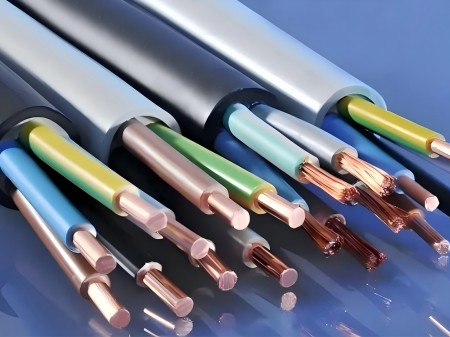The basic structure of power cable is composed of four parts: wire core (conductor), insulation layer, shielding layer and protective layer. The insulation layer is the electrical isolation between the wire core and the ground and the different phases of the wire core to ensure the transmission of electric energy, and is an indispensable part of the power cable structure.
The role of the insulation layer:
The core of a cable is a conductor. In order to prevent equipment damage caused by short circuit of exposed wires and harm to people caused by wires that exceed the safety voltage, an insulating protective layer must be added to the cable. The electrical resistivity of the metal conductor in the cable is very small, and the electrical resistivity of the insulator is very high. The reason why the insulator can be insulated is because: the positive and negative charges in the molecules of the insulator are very tightly bound, the charged particles that can move freely are very few, and the resistivity is very large, so in general, the macro current formed by the free charge movement under the action of the external electric field can be ignored, and it is considered to be a non-conductive substance. For insulators, there is a breakdown voltage that gives electrons enough energy to excite them. Once the breakdown voltage is exceeded, the material no longer insulates.
What is the impact of unqualified insulation thickness on the cable?
Shorten the service life of wire and cable products, if the thin point of the cable sheath does not meet the requirements, after long-term operation, especially in the direct buried, submerged, open or corrosive environment, due to the long-term corrosion of the external medium, the insulation level and mechanical level of the thin point of the sheath will be reduced. Routine sheath test detection or line grounding failure, the thin point may be broken down, the protective effect of the cable sheath will be lost. In addition, the internal consumption can not be ignored, wire and cable long-term power will produce a lot of heat, it will shorten the service life of the wire and cable. If the quality is not up to standard, it will cause fire and other safety hazards.
Increase the difficulty of the laying process, in the laying process need to consider leaving a gap, so as to dissipate the heat generated after the wire and cable power, the thickness of the sheath is too thick will increase the difficulty of laying, so the thickness of the sheath requires strict compliance with the relevant standards, otherwise it can not play a role in protecting the wire and cable. One of the characteristics of product quality is reflected in the appearance quality of the product. Whether it is a power cable or a simple cloth wire, the quality of the insulation layer must be paid attention to in the production, and it must be strictly controlled and tested.
Perhaps many people will have doubts, since the role of the insulation layer is so large, the surface of the lighting cable and low-voltage cable are covered with a layer of plastic or rubber insulation, and the high-voltage cable in the field is not covered with insulation.
Because at too high a voltage, some materials that are originally insulating, such as rubber, plastic, dry wood, etc., will also become conductors, and will not have an insulating effect. Wrapping insulation on high-voltage cables is a waste of money and resources. The surface of the high-voltage wire is not covered with insulation, and if it is suspended on the high tower, it may leak electricity due to contact with the tower. In order to prevent this phenomenon, the high voltage wire is always suspended under a long series of well-insulated porcelain bottles, so that the high voltage wire is insulated from the tower. In addition, when installing high-voltage cables, do not drag them on the ground. Otherwise, due to the friction between the wire and the ground, the originally smooth insulation layer is damaged, and there are many burrs, which will produce tip discharge, resulting in leakage.
The insulation layer of the cable is set according to the needs of the cable. In the production process, manufacturers need to control the insulation thickness in strict accordance with the process standards, achieve comprehensive process management, and ensure the quality of wire and cable.
Post time: Nov-14-2024


